Flower Glossary is reader-supported. When you buy through links on our site, we may earn an affiliate commission.
It can be disappointing to spend your time working to create a beautiful garden, only to find you can’t enjoy it fully when you stop in the evenings.
As the sun starts to set and the temperatures drop, flowers tend to close up for the day, leaving your lovely garden looking a little empty.
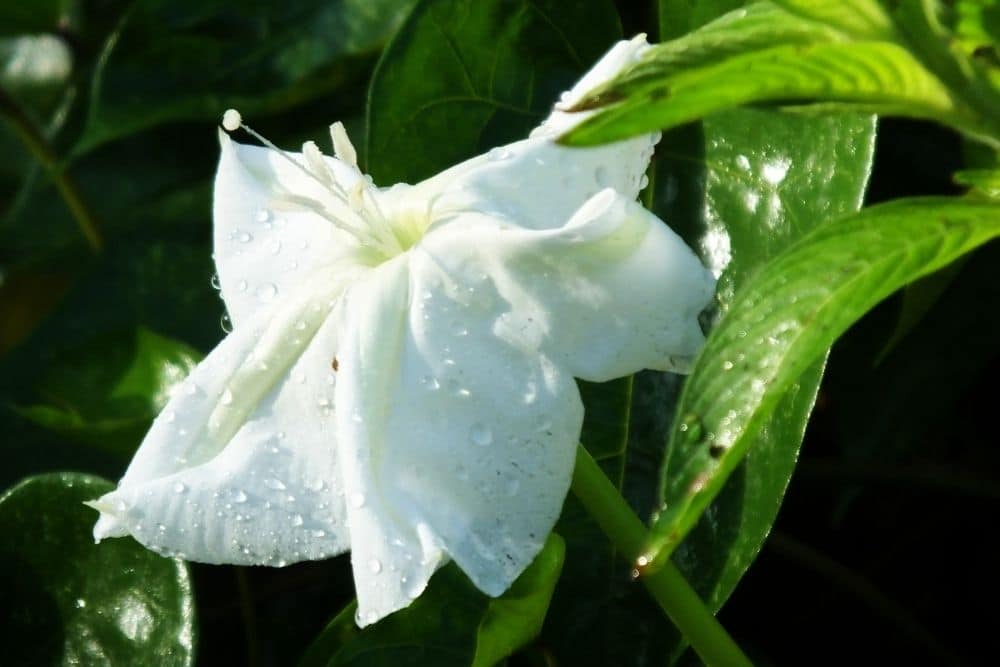
If you entertain in the evenings, this change can be quite frustrating. With the flowers closed, you can’t show off how exquisitely designed your beds may be.
But there isn’t much we can do to fight nature, so most of us learn to simply enjoy our gardens as much as we can in the day.
Thankfully, there is a solution. Night blooming flowers wait until the sun sets to open up. These unusual species are often heavily fragrant, and a beautiful addition to any garden.
Table of Contents
1. Evening Primrose (Oenothera Biennis, Biennial)
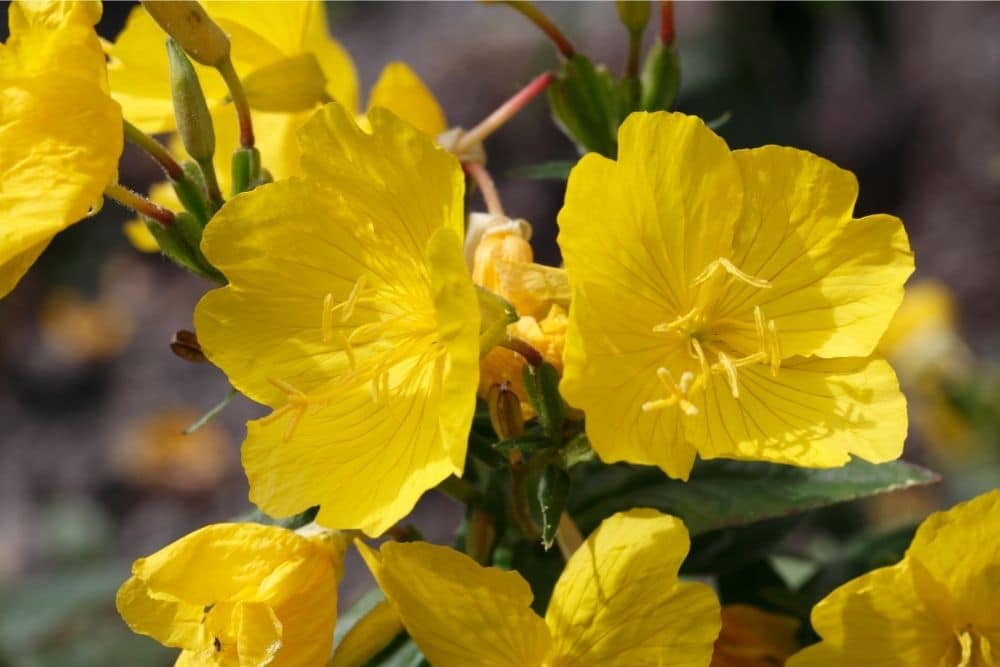
The gorgeous evening primrose is one of the most popular of the night blooming plants. The 4 petal flowers grow to two inches across, and add a bright splash of color to a darkening garden. Available in yellow, white, or pink, the heavy fragrance fills the garden with notes of lemon.
Native to parts of North America, the Evening Primrose can be quite a hardy plant. It typically blooms from late spring to late summer, and even early fall. It’s ideal for attracting pollinators, as bees, butterflies, and moths are all drawn to the incredible scent.
The Evening Primrose begins to open in the early evening, and stays open until the next morning. These are a treat to watch, as they open quickly. Sit out in the evening, and you can see your garden as it transforms from day to night.
Many parts of the Evening Primrose are edible, making it a lovely choice for a working garden. It can also be used to make Evening Primrose Oil, which is well-known for its medicinal purposes.
2. Moonflower (Ipomoea Alba, Perennial/Annual)
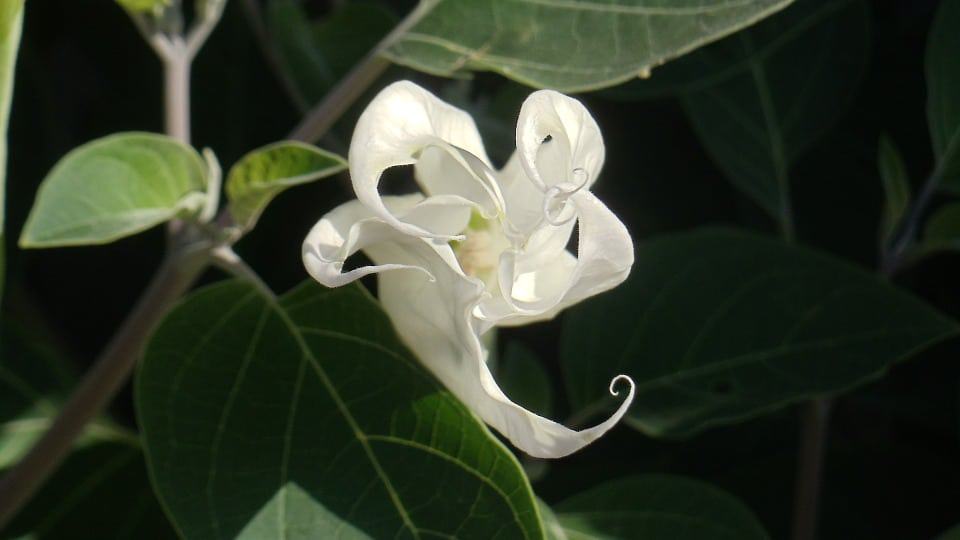
Moonflower is native to North America, where it enjoys hot climates and lots of sunshine. If you can, plant in an area of the garden that gets full sun, although partial shade will do.
In colder zones, the Moonflower can do well growing as an annual, rather than a perennial. No matter the weather, they prefer lots of fertilizer.
With long and heavy vines, Moonflower does best when grown next to a trellis. It can reach a height of 15 feet, to support the 4 to 6 inch blossoms it produces.
3. Devil’s Trumpet (Datura Meteloides, Annual)
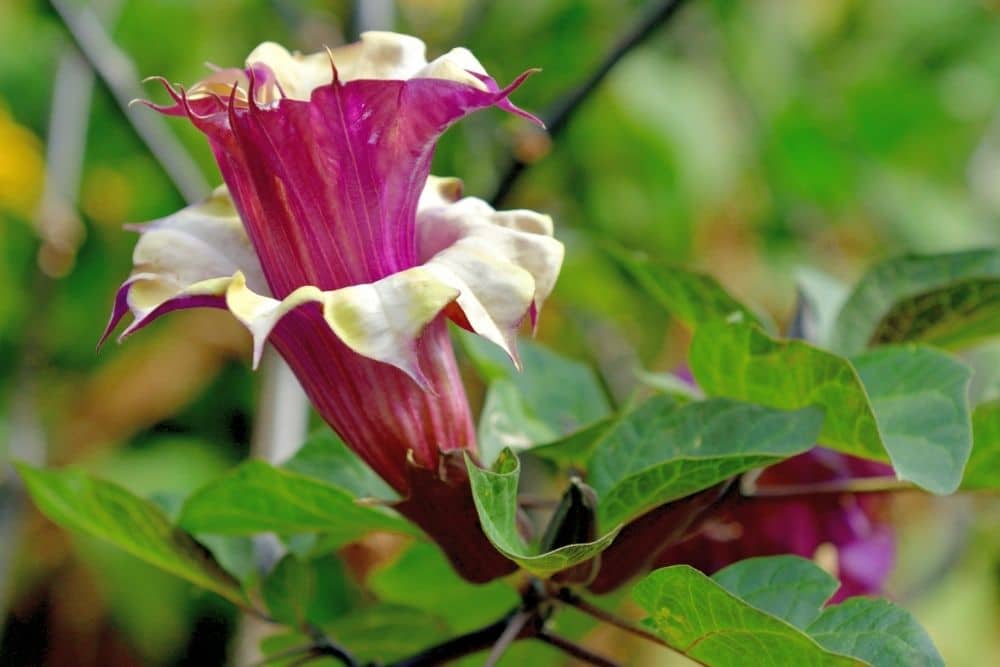
The Datura goes by quite a few names, but Devil’s Trumpet is the most common nickname. The reason comes from the large flowers that bloom upwards in the shape of a trumpet.
They look exotic in the garden, especially with the moon bouncing off the pale petals. The Devil’s Trumpet is commonly white, but can also be found tinged with purple or pink.
Devil’s Trumpet is a popular choice for a night blooming garden because they linger into the next day.
Typically blooming between spring and fall, there’s lots of time to enjoy their alluring scent. But be careful! The Devil’s Trumpet is deadly, and has in the past been used as a poison. This beautiful flower is not suitable for homes with pets or children.
Be aware, the Datura is also sometimes referred to as the “moonflower”. Make sure to double-check which species you’re purchasing, to avoid any danger.
4. Angel’s Trumpets (Brugmansia, Tender Perennial)
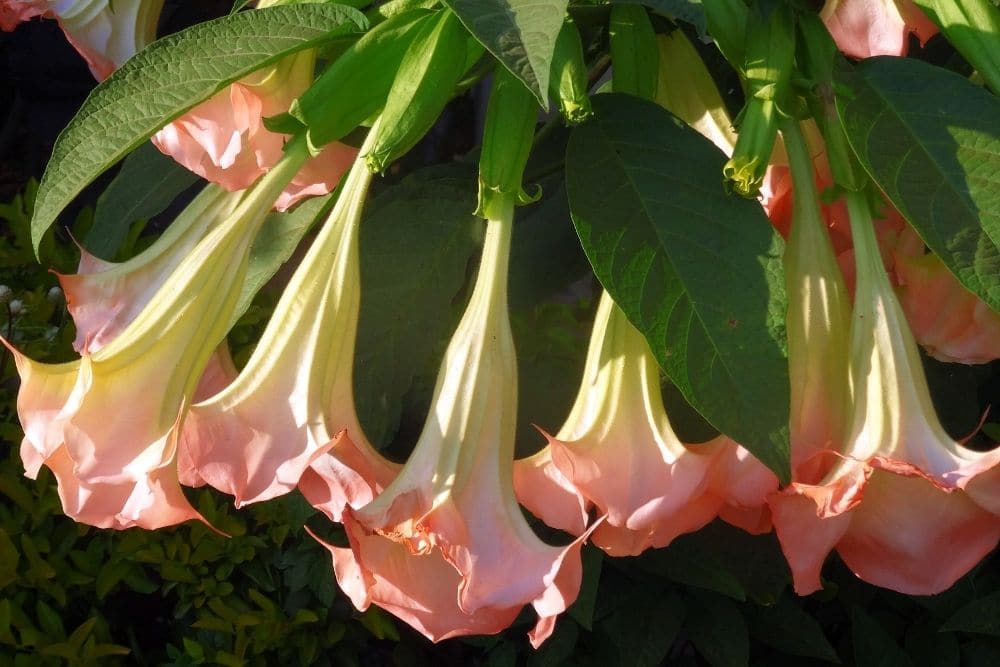
If you want to tell the Angel’s Trumpet apart from the Devil’s Trumpet, the easiest way is to check the direction of the bloom. Where the Devil’s Trumpet is firmly upright, the Angel’s Trumpet falls elegantly downward.
The Angel’s Trumpet is a vibrant mixture of ostentatious and refined. The softly drooping petals can be a riot of color, from peach, to white, to pink, to green, to red, to orange. Each flower is large, but the plant itself is quite a small tree.
No longer found in the wild, the Angel’s Trumpet is fairly easy to come across in garden centers. It does especially well in coastal California, but can be suitable for cooler climates. Keep it in a pot, and be sure to bring it indoors over winter.
When the Angel’s Trumpet blooms depends on the cultivar. Some prefer spring, where others wait until late summer.
Don’t let the “Angel” fool you – these plants are also poisonous. They aren’t suitable for planting in areas with children or animals.
5. Night-Blooming Jasmine (Cestrum Nocturnum, Tender Perennial)
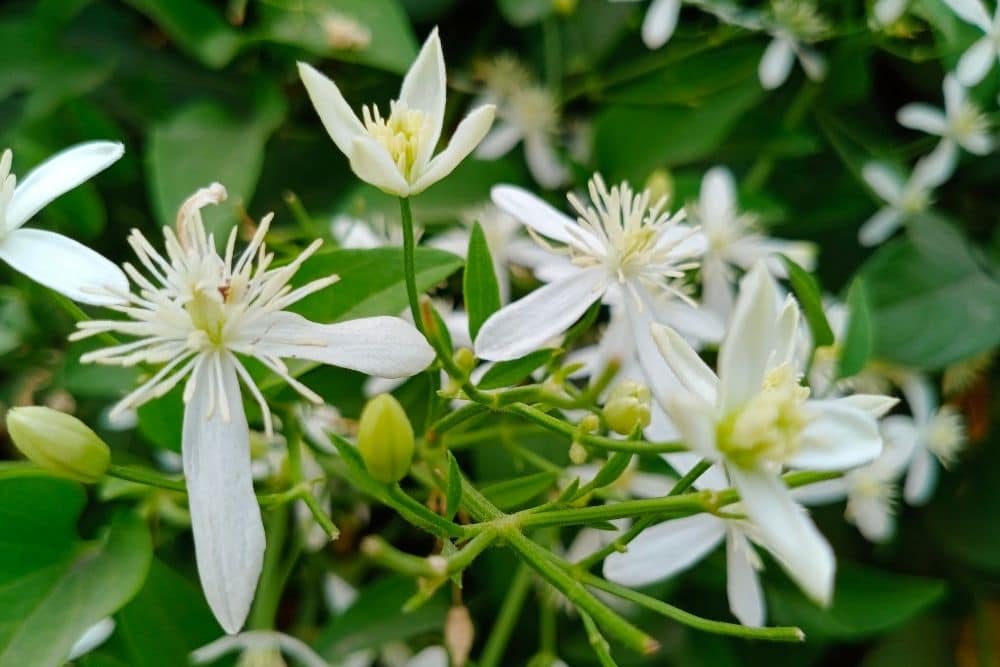
The delicate flowers of the Night-Blooming Jasmine are quite different to the others on this list, but no less beautiful. Small, white, and elegant, they stand out against the rich green backdrop of the leaves.
While the flowers may be small, the scent is anything but. The heavy perfume of the Night-Blooming Jasmine is the primary reason to plant it. It can permeate the entire garden, scenting your summer evenings with the most beautiful fragrance.
The best place to plant this gorgeous night flower is by a window. That way, the aroma can travel into the house, completing any summer evening.
The Night-Blooming Jasmine is a great choice for a number of reasons, and it adapts well to different climates. It can flourish when grown in containers, and will flower from spring through to fall.
Still producing flowers in October, this plant keeps the garden looking its best as the cooler months set in. One thing to be aware of – the heavy perfume can be an irritant for those with asthma, and small children.
6. Four O’Clock Flower (Mirabilis Jalapa, Annual/Perennial)
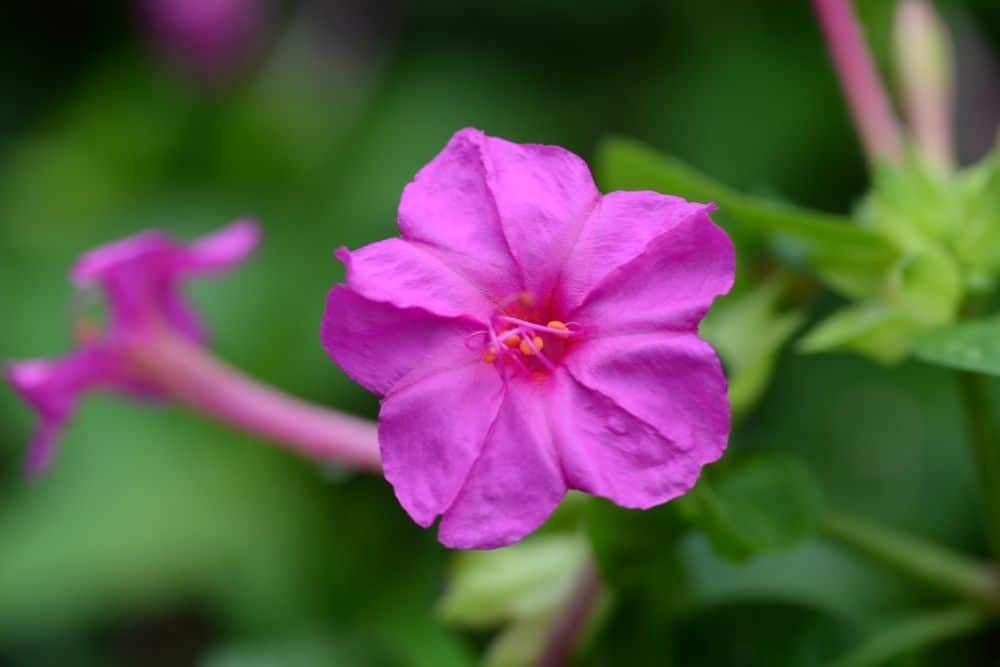
If you enjoy spending a summer’s afternoon lounging on the patio and watching the day turn to dusk, then the Four O’Clock flower might be the perfect choice. It’s so named because as the afternoon starts to wane, the flower begins to bloom, and it lasts until morning.
With a wide color variety – including red, pink, yellow, white, and blue – Four O’Clock adds exciting visual interest to an evening garden. They’re particularly exciting because one plant doesn’t produce all the same color flowers, so you can have a real mix.
The Four O’Clock flowers are annuals, and will grow well in cooler weather with full sun or partial shade. They can also be grown as perennials, particularly in coastal California. Colder areas will find that they die with the first signs of frost, but come back in the spring.
Another delightful feature of the Four O’Clock flower is the lemon and spice fragrance. This lovely bloom will really add joy to a night garden.
7. Tuberose (Polianthes Tuberosa, Tender Bulb)
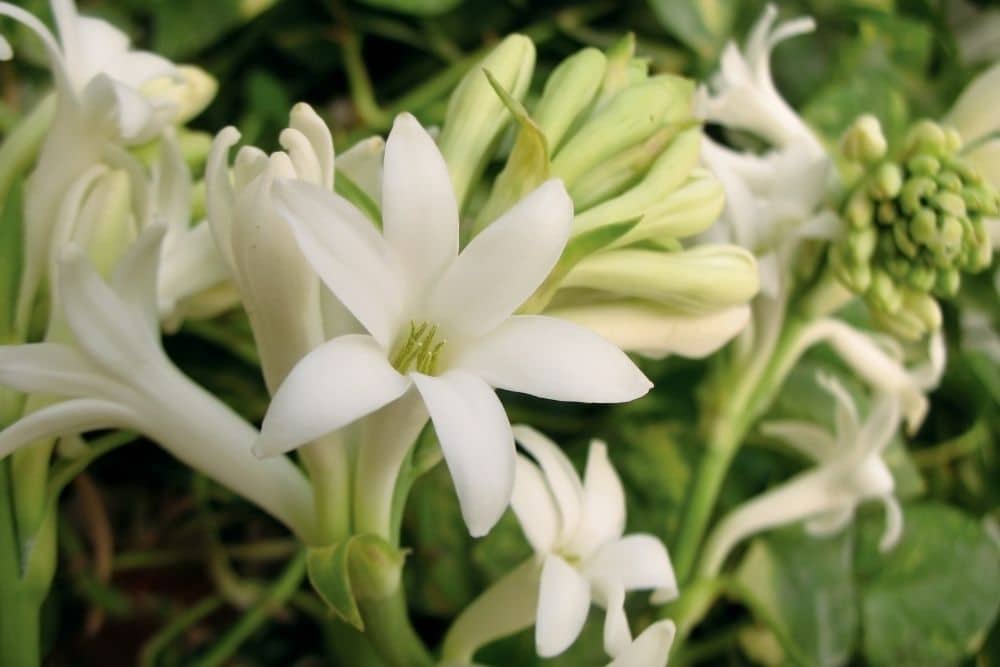
While the clusters of white flowers do make the Tuberose beautiful, the real feature of this plant is the gorgeous aroma. Long cultivated due to the enticing scent, the Tuberose is used in perfumes, and even wedding bouquets.
In the garden, Tuberose can be surprisingly easy to grow from bulbs. It can reach a height of up to 4-feet tall, and on top of this strong vine is a sprinkling of elegant tube flowers.
The glistening white petals seem to glow in the moonlight, and their uniquely star-like shape make the Tuberose a fitting choice for a night bloom.
The Tuberose makes an elegant addition to flower beds and borders, but perhaps the best place for it is a pot. That allows you to plant the Tuberose near the patio or entertaining area.
On a warm evening in late summer, watch as the flowers burst open, and the incredible fragrance is released.
8. Casa Blanca Lily (Lilium “Casa Blanca”, Perennial)
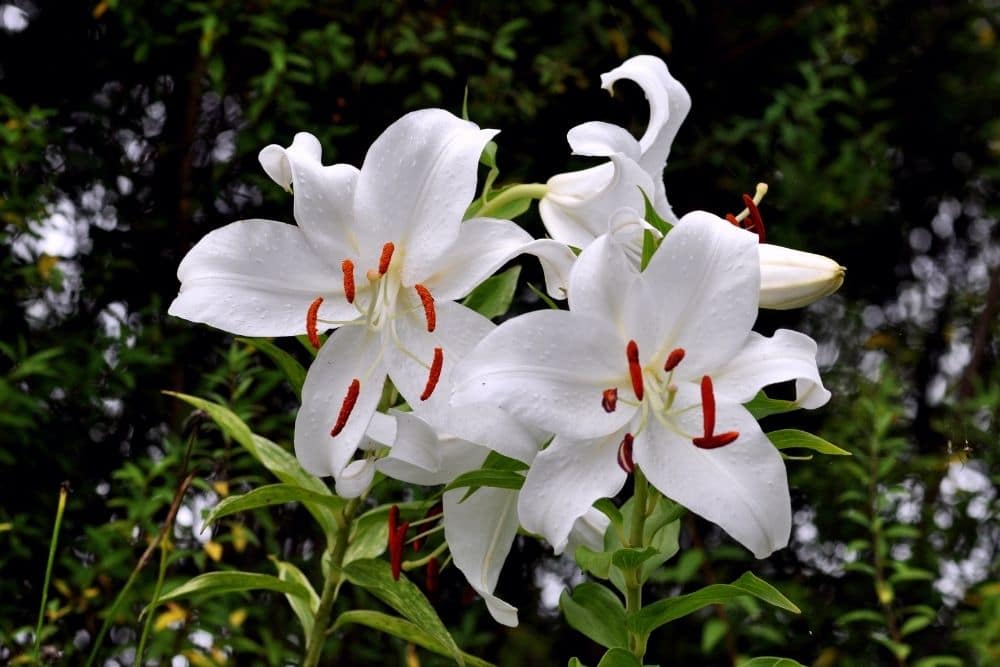
If you want a statement flower in your moon garden, few are more suited than the Casa Blanca Lily. These large, outward facing flowers are a splendid white, and on clear evenings the moonlight bounces off them.
Lilies are statement flowers, and the Casa Blanca Lily ensures your garden has just as much excitement at night as it does in the day.
Even though they look impressive, the Casa Blanca Lily is surprisingly easy to grow. It tolerates lots of different soil conditions, and blooms late into summer. The lily is also a fantastic pollinator, attracting bees and butterflies to the garden.
The Casa Blanca Lily is also a good choice if you have a cutting garden – just make sure enough stem and leaves are left for the bulb to survive through winter.
From the flower to the fragrance, there’s much to enjoy in the Casa Blanca Lily. However, be aware that it can be toxic to animals. If you have cats in your garden, give this plant a miss.
9. Nicotiana (Nicotiana, Annual)
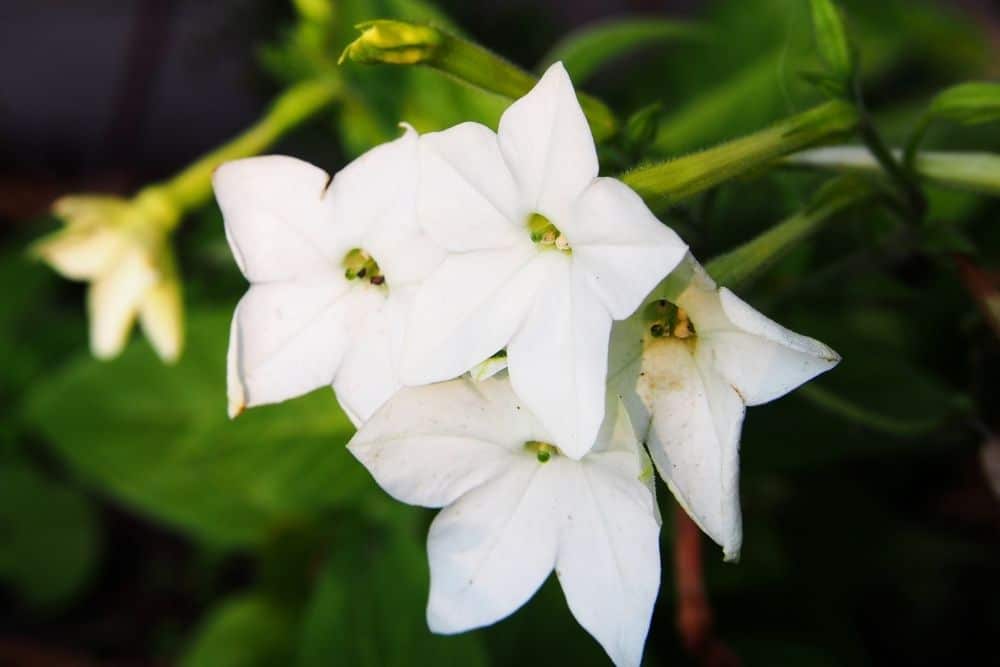
Flowering tobacco may not be the obvious choice for the garden, but once you’ve seen the beauty of the Nicotiana you’ll soon be convinced. These flowers can be transplanted from pots, but also germinate quickly from seed.
If you’re interested in adding vibrancy to a night garden, the pink or red Nicotiana are a wonderful option.
On warm summer evenings, these plants flower to reveal a rich nectar, ideal for attracting pollinators. Blooming in the late afternoon, they have a delicate freesia scent that permeates the garden as the sun sets.
The star shaped petals have a simple beauty, enhanced by the bold colors. The white options are elegantly attractive, reflecting the bright moonlight.
Be aware that if consumed, these plants can be toxic. Houses with dogs or children should avoid.
10. Red Flare Water Lilies (Nymphaea “Red Flare”, Perennial)
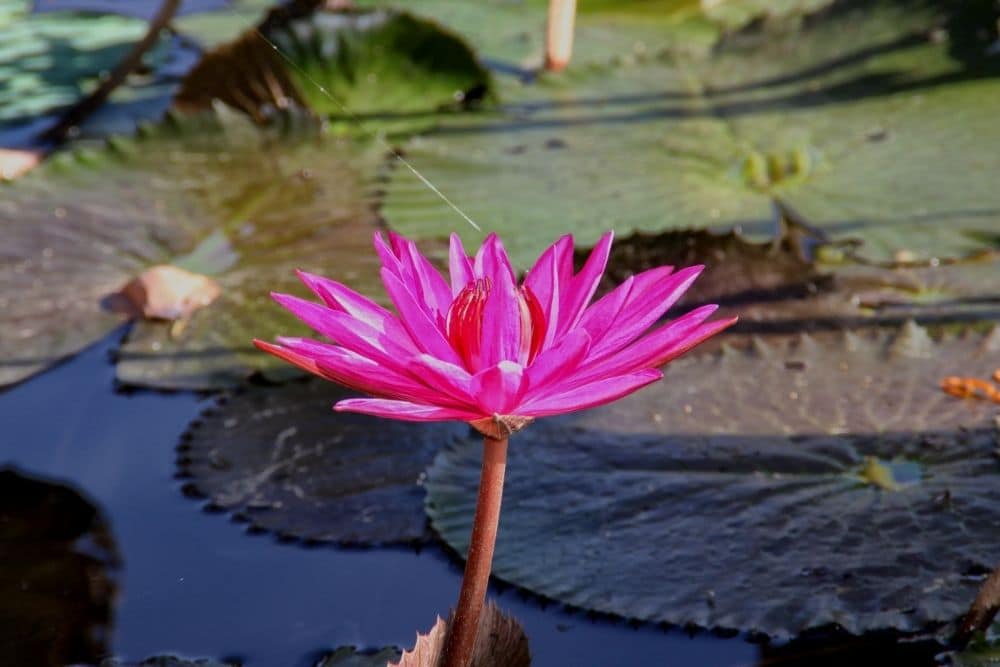
It isn’t just the flower beds that get to have all the fun – an ornamental pond can be a feature well into the night with these moon flowering water lilies. As the summer evening closes in, these lilies open up to reveal a vibrant red coloring, which lasts until late into the next morning.
If you have a warm pond in full sun, Red Flare Water Lilies are a great addition. The vivid red petals are accented by bronze leaves, bold against the dark pond.
They have a long season, meaning you can enjoy the water lilies even as it starts to turn cooler. And they don’t require much care. Simply remove old leaves and be sure to deadhead.
Final Thoughts
A garden doesn’t have to go quiet at night. Heavily fragrant, and often luminous in the moonlight, night blooming flowers are a worthy investment.
If you enjoy hosting, guests will be delighted by the sights and aromas of your carefully chosen blooms. And as an evening turns to dusk you can watch, delighted, as each flower opens up.
